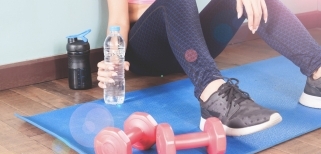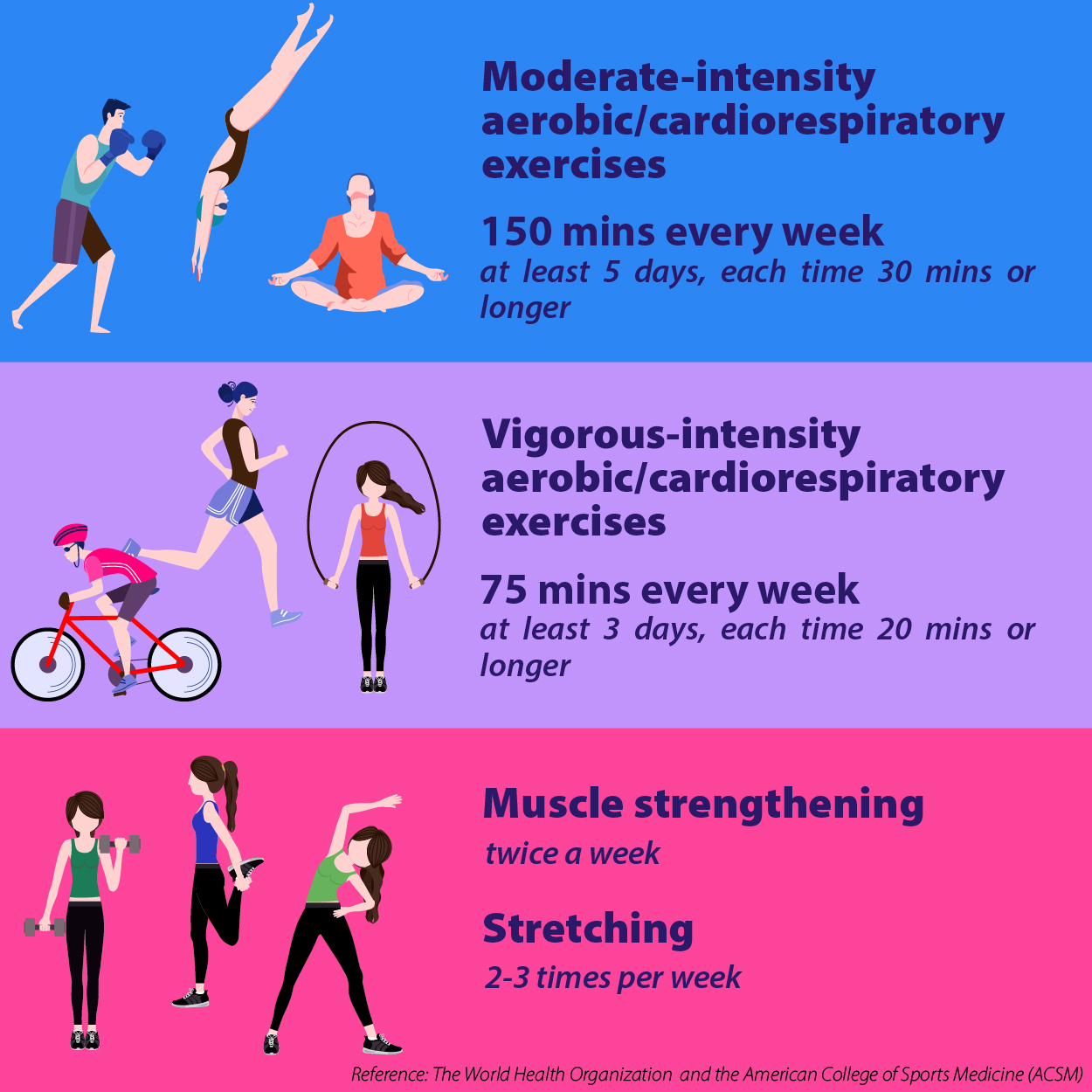




Health Information



Exercise tips during COVID-19

Exercise tips during COVID-19 (by Sportsperformance Physiotherapy)
Due to the COVID-19 pandemic, a lot of our daily routines have been affected. Following the closure of both the public and private fitness facilities such as swimming pools, gyms, yoga studios and dance studios, people’s exercise opportunity is further limited.
As we should all know that there are different benefits of exercising, including lower mortality rate of all cause, lower rate of coronary heart disease, high blood pressure, stroke, type 2 diabetes, some cancers and depression and many more. These benefits are supported by strong evidences, therefore, it’s important for us to stay active.
Everyone got different fitness level and would require different exercise training. For people who exercise regularly might have also found alternative ways to carry on with their fitness journey. However, for people who are not used to doing exercise regularly or without supervision might be a bit lost at this moment.
Exercise recommendation from the professional bodies
The World Health Organization (WHO) and the American College of Sports Medicine (ACSM) recommended that general adults should do no less than 150 minutes of moderate-intensity aerobic/cardiorespiratory exercises or 75 minutes of vigorous-intensity aerobic/cardiorespiratory exercises every week. An equivalent combination of different intensity activity is also acceptable.
The ACSM provided extra details regarding the weekly exercise patterns for aerobic exercises. The moderate-intensity cardiorespiratory exercises should be done on at least 5 days and each session should be 30 mins or longer. For the vigorous-intensity cardio workouts, they should be done across at least 3 days and at least 20 mins per day.
Besides, muscle-strengthening exercises should be completed at least twice a week. Moreover, stretches are suggested to be done 2-3 times a week for 2-4 repetition each time, the stretch should be held for 10-30 secs or 30-60 seconds for older adults.
Moderate-intensity physical activity
The aerobic exercises intensity can be classified by the Metabolic Equivalents (METs). One MET is the amount of oxygen consumed while resting in a sitting position.
The moderate-intensity aerobic exercises should be around 3-6 METs. During these activities, a moderate amount of effort should be required, and the heart rate should be noticeably accelerated.
There are plenty of fun choices, such as bowling, moderate swimming, golf, social badminton, boxing practice and frisbee. However, these choices have certain limitations. Firstly, some of them require specific training and may not be suitable for all general public. Secondly, considering the importance of social distancing, they might not be the best exercises at this moment. You can also consider picking up any of these sports in the future.
For now, some simple cardio activities which can be completed at home may be good choices for the novice. Dancing, yoga and pilates are all considered as moderate-intensity aerobic exercises. Another popular option nowadays is physical activities related video game. If you would like to go outdoor, brisk walking is always a good choice.

Vigorous-intensity aerobic physical activity
The vigorous-intensity cardio workout should be above 6 METs; physically it should require large amount of effort and substantially increase the heart rate.
For vigorous-intensity physical activities, there are limited choices for home exercises, aerobics may be one. For outdoor ones, running, hiking, cycling, rope skipping are all good options.
Muscle-strengthening
Muscle-strengthening exercises should be started on major muscle groups, for example, biceps, triceps, pectoralis, quadriceps and hamstrings. Muscle strengthening exercises are different from aerobic exercises, which you will need some weights. If you are a beginner, you can consider starting with materials that you can find at home, such as a bottle of water or a bag of rice. Some simple proper equipment, including resistance bands and dumbbells, can be purchased for home exercises.
Flexibility training
It is important to maintain the flexibility of muscles, this can help to prevent strain injuries. Static stretches can help maintain the range of movement, which should be done on the major muscle-tendon complex. The tightness in the muscle-tendon complex is related to your exercise and daily activities, you can stretch the ones that suits you. Hip flexor, quadriceps, hamstrings and gastrocnemius might be good ones to start your stretching exercises with.
Injury Prevention
All physical activities involve the risk of injury. Muscle strain and ligament sprain are common injuries resulting from self-exercising. There are a lot of free exercise tutorials online. If you are a beginner, starting with the easier ones is always a good idea; short duration, low intensity and rest in between. When you have mastered the easier ones, then you can gradually progress. Make sure you always listen to your body; tiredness and minimal aches can be present during/post exercises. There may be something wrong if there is any pain during/post-exercise. Seek professional advice if needed.
Stay active and healthy, let’s fight against COVID-19!



